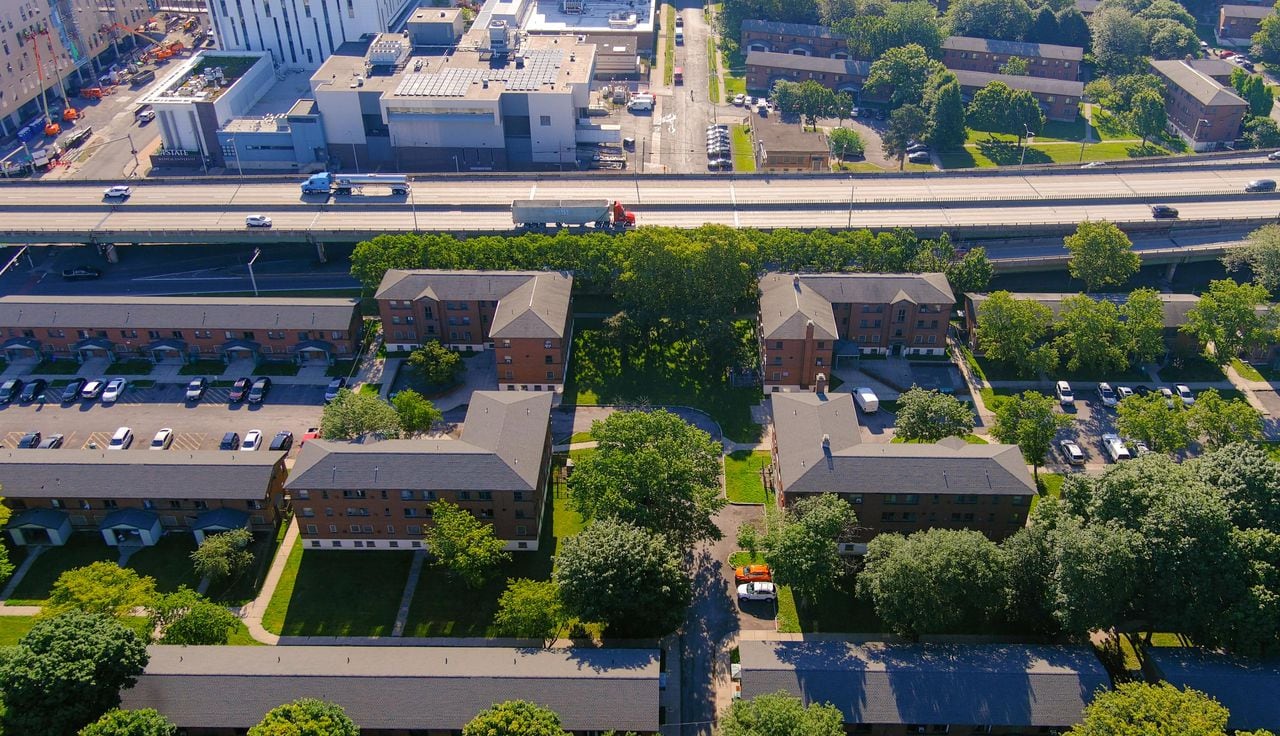Dear reader,
A top project related to the plan to remove Interstate 81 through Syracuse is rebuilding the more than 1,000 public housing units that now sit next to the elevated highway, and making sure the current residents are taken care of appropriately.
“In the 1950s and ‘60s, the state and federal governments built Interstate 81 through the middle of this historically Black neighborhood. It is also split by a railroad and is home to a steam plant. As the highway comes down, there is an $800 million plan to rebuild the neighborhood for a mix of subsidized and market-rate apartments,” explains reporter Michelle Breidenbach. “As the land becomes more valuable, advocates fear the ‘eds and meds’ will march down the hill and take it over. There are a lot of people watching to make sure history does not repeat itself.”
That’s why it was especially surprising to residents and many local officials when Michelle reported last week that the Syracuse Housing Authority was considering a proposal from SUNY Upstate Medical University to build an optometry school on land that’s now home to 92 of those public housing units.
“Syracuse Housing Authority Director Bill Simmons approached SUNY Upstate officials with a request to put a health clinic in one of the senior apartment buildings next door to their campus. He is writing a grant application to HUD for $50 million to rebuild public housing into a new mixed-income neighborhood. It looks good for applicants to have financial commitments from anchor institutions like the hospitals and colleges within walking distance of the project. It also helps to show that these big employers have workers who will want to live in new market-rate housing.
SUNY Upstate is looking for a place to put a new $125 million optometry school. Simmons said the discussion evolved from the health clinic idea to building the whole optometry school on land next to the senior towers, where 92 units of public housing are already scheduled to be torn down and replaced. SUNY Upstate offered to put a health clinic for residents inside that building. They also said they would move their hospital police headquarters to that building.
That checked a lot of boxes for Simmons and SHA Board President Calvin Corriders, who is also on the SUNY Upstate advisory board. The residents would get a health clinic, some extra security and millions of dollars to spend on new housing down the street, farther from the hospital campus and the I-81 viaduct.
SUNY Upstate put the offer in writing, in a letter of support for the HUD grant application. Simmons developed some talking points to take to tenants and other community stakeholders. “We shared those details with readers,” Michelle said.
The proposal detailed in Michelle’s story came as a surprise to many including Assemblywoman Pamela Hunter, who represents most of those living in public housing, and the residents themselves. Despite the rationale behind it, the plan didn’t sit well with the community, including Deputy Mayor Sharon Owens, who said plainly, “it’s not a good idea,” and the director of the NYCLU’s racial justice center, who called it an “alarming” proposal. Within 28 hours of Michelle’s article, the SHA put the plan on ice.
“The idea was met with an immediate gut-level ‘no’ by the many people who want this land to remain a residential neighborhood. Everyone agrees the 92 current apartments have to go. They are 85 years old – some of the oldest public housing in America. They need a lot of work. There’s no air conditioning. No laundry rooms. They were built around cul-de-sacs that conveniently hide nefarious activity. But the people who grew up there and live there now want the land to continue to be used for affordable housing,” Michelle said. “The site is in a census tract that has a poverty rate of 71% and an unemployment rate of 30%. Some people have lived there for generations. Others have moved away but continue to fight for their friends and family members who still live there.”
Michelle’s reporting is an example of the watchdog role we play in Central New York, thanks to the support of subscribers like you. We take our job seriously of informing the public about big decisions – before it’s too late.
The housing rebuild is just one of many aspects related to the 81 project we’ll be keeping a close eye on. If you have a question or suggestion for coverage, you can reach Michelle directly at: mbreidenbach@syracuse.com
